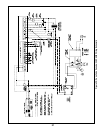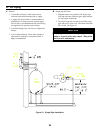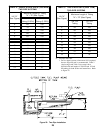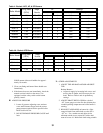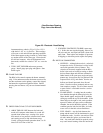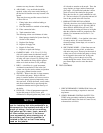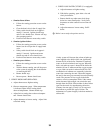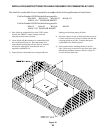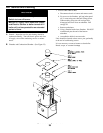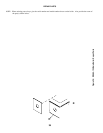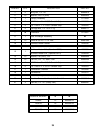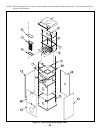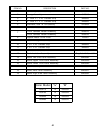34
a. Simulate flame failure:
• Follow the starting procedure to turn on the
burner.
• Close the hand valve in the oil supply line.
• Safety switch should lock out in approxi-
mately 15 seconds. Ignition should stop
and oil valve should close. Blower will stop
after postpurge period.
• Push red reset button to reset safety switch.
b. Simulate ignition failure:
• Follow the starting procedure to turn on the
burner, but do not open the oil supply hand
valve.
• Safety switch should lock out in approxi-
mately 15 seconds. Ignition and motor
should stop and oil valve should close.
• Push red reset button to reset safety switch.
c. Simulate power failure:
• Follow the starting procedure to turn on the
burner.
• With the burner running, turn off the power
to the system by tripping the circuit breaker
or removing the fuse.
• Burner should stop.
• Restore power. Burner should start.
3. VERIFY HIGH LIMIT OPERATION.
a. Adjust thermostat to highest setting.
b. Observe temperature gauge. When temperature
is indicated, adjust limit to setting below
observed temperature. Burner should stop.
c. Adjust limit to setting above observed tempera-
ture. Burner should start.
d. Adjust thermostat to lowest setting. Adjust limit
to desired setting.
4. CHECK LOW WATER CUTOFF (if so equipped).
a. Adjust thermostat to highest setting.
b. With boiler operating, open drain valve and
slowly drain boiler.
c. Burner should stop when water level drops
below low water cutoff probe. Verify limit,
thermostat or other controls have not shut off
boiler.
d. Adjust thermostat to lowest setting. Refill
boiler.
Q. Boiler is now ready to be put into service.
A leaky system will increase the volume of make-up
water supplied to the boiler which can significantly
shorten the life of the boiler. Entrained in make-up
water are dissolved minerals and oxygen. When the
fresh, cool make-up water is heated in the boiler the
minerals fall out as sediment and the oxygen escapes
as a gas. Both can result in reduced boiler life. The
accumulation of sediment can eventually isolate the
water from contacting the steel. When this happens
the steel in that area gets extremely hot and eventually
cracks. The presence of free oxygen in the boiler
creates a corrosive atmosphere which, if the concen-
tration becomes high enough, can corrode the steel
through from the inside. Since neither of these failure
types are the result of a manufacturing defect the
warranty does not apply. Clearly it is in everyone’s
best interest to prevent this type of failure. The
maintenance of system integrity is the best method to
achieve this.




